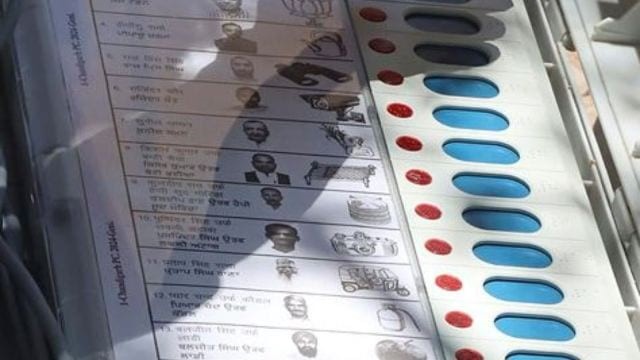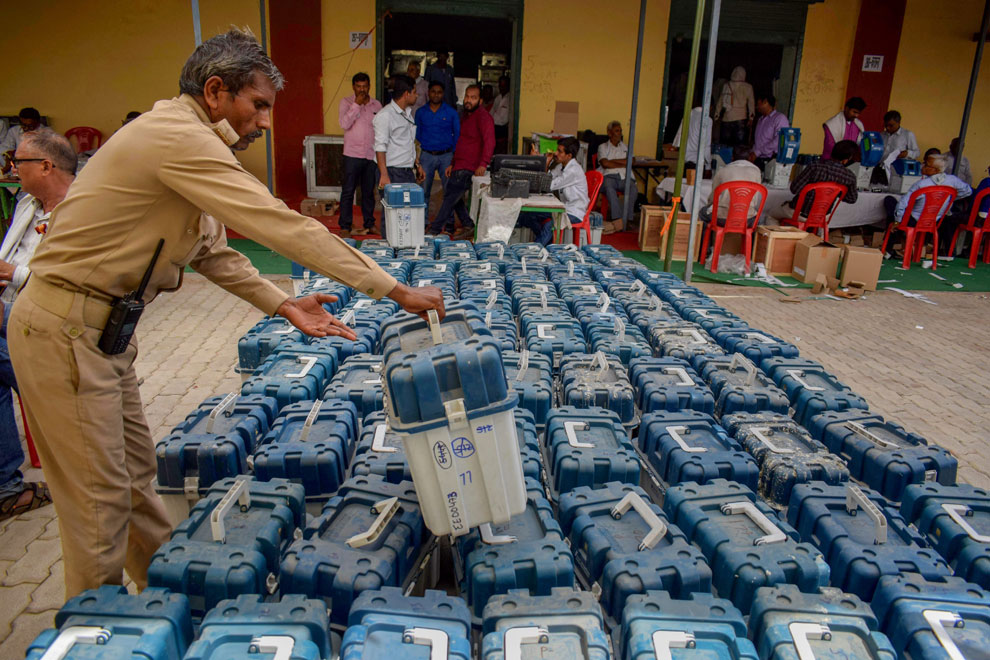Supreme Court Ruling on EVMs

- 28 Nov 2024
In News:
The Supreme Court dismissed the PIL, remarking that EVMs are only questioned after electoral losses, not when elections are won. It emphasized that no evidence of tampering was found.
What Are EVMs and VVPATs?:
- EVMs: Electronic Voting Machines are used for conducting elections to the Parliament, state legislatures, and local bodies. They consist of two units: theControl Unit (operated by the polling officer) and the Ballot Unit (where voters cast their votes).
- VVPAT: The Voter Verifiable Paper Audit Trail enables voters to verify that their vote is recorded as cast. A slip is printed showing the candidate’s name, symbol, and serial number, visible for 7 seconds before being cut and stored in a sealed box.
Safeguards to Ensure EVM Integrity:
- Technical Safeguards:
- Microcontroller Security: EVMs use one-time programmable (OTP) microcontrollers, which cannot be altered after manufacturing.
- Standalone Operation: EVMs do not have wired or wireless connectivity, eliminating risks of remote tampering.
- Post-2013 Features: Advanced EVMs (M3) include tamper detection and mutual authentication protocols.
- Administrative Protocols:
- Randomized EVM Allocation: EVMs are randomly allocated to polling stations to avoid predetermined assignments.
- Mock Polls: Multiple mock polls are conducted to test the functionality of EVMs.
- Counting Procedures: EVMs are brought to counting tables under CCTV surveillance, and VVPAT slips are randomly cross-verified.
- Secure Storage: EVMs are stored under strict protocols, including double-lock systems, CCTV surveillance, and GPS-tracked transport.
Advantages of EVMs Over Ballot Papers:
- Elimination of Invalid Votes: EVMs ensure no invalid votes, a common problem with torn or mis-marked ballot papers.
- Prevention of Booth Capturing: EVMs restrict vote casting to 4 votes per minute, preventing fraudulent vote insertion.
- Accurate and Fast Counting: EVMs enable quick, error-free vote counting, reducing delays and human errors.
- Transparency: Voters can verify their votes through the VVPAT, and the vote count is displayed transparently without revealing candidate-wise results prematurely.
Evolution of EVMs in India:
- 1977: Concept of EVMs conceived.
- 1990: The Dinesh Goswami Committee recommended the use of EVMs.
- 2004: EVMs used nationwide in Lok Sabha elections.
- 2013: VVPAT was introduced to improve transparency.
- 2019: First nationwide use of EVMs backed by VVPAT.
District Election Management Plan

- 26 Mar 2024
Why is it in the News?
Effective execution of elections demands thorough planning, where a crucial aspect is the meticulous formulation and implementation of the District Election Management Plan (DEMP).
About the District Election Management Plan (DEMP):
- The District Election Management Plan (DEMP) is a comprehensive document designed to ensure the smooth conduct of elections, employing statistics and analysis.
- According to the Election Commission of India, the DEMP must be prepared at least six months before the tentative poll day.
- Collaboration among election officials, administrative authorities, law enforcement agencies, etc., is crucial for the execution of the DEMP.
Key components of the DEMP include:
- District Profile: A district profile providing foundational electoral strategy, featuring political maps outlining constituencies, key demographic and infrastructure statistics, and a brief on the district’s administrative setup and socio-economic features.
- Polling Stations: Detailed strategies for enhancing the availability and accessibility of polling stations, ensuring essential facilities such as ramps, electricity, lighting, drinking water, toilets, and internet connectivity.
- Special Attention to PwD and Senior Citizens: Addressing the requirements of voters with disabilities and senior citizens through dedicated help desks, round-the-clock control rooms, home voting options, and advanced postal ballot voting for essential service personnel.
- Systematic Voters’ Education and Electoral Participation (SVEEP) Plan: Integration of the Systematic Voters’ Education and Electoral Participation (SVEEP) plan, focused on increasing electoral participation.
-
- Planning, training, welfare, and deployment strategies for election personnel, along with training initiatives for district-level teams to enforce the Model Code of Conduct (MCC) and equip all election personnel with the necessary skills and knowledge.
Regarding Electronic Voting Machines (EVMs)?
- Management of Electronic Voting Machines (EVMs) is vital to uphold the integrity of the electoral process, encompassing strategies for secure storage, availability, transportation, and maintenance of both EVMs and Voter Verifiable Paper Audit Trails (VVPATs).
- The District Election Management Plan (DEMP) contributes to enhancing the voting process by ensuring its organization and accessibility to all voters.
- Furthermore, the principles employed in the DEMP, such as meticulous planning, collaboration, and transparency, offer valuable insights applicable beyond elections, providing lessons for broader governance.
- The emphasis on advanced planning, data-driven decision-making, and stakeholder collaboration highlighted by the DEMP is instrumental in addressing challenges effectively.
